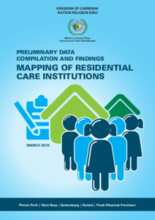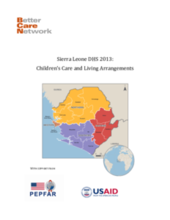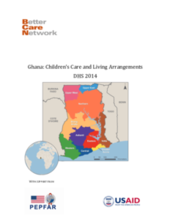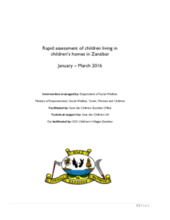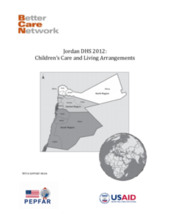Displaying 231 - 240 of 565
This study explores the determinants of child-parent separation and the consequences of existing alternative care arrangements from the perspectives of adults and young people in Laos.
This manuscript reviews the issues facing children outside of households and argues for the importance of gathering robust data about this population to formulate responsive policies and services, mobilize resources, and foster accountability.
This investigation into economic migration of Guatemalan parents shows that the timing of migration events in relation to left-behind children’s ages has important, often negative and likely permanent, repercussions on the physical development of their children.
Cambodia's Ministry of Social Affairs, Veterans and Youth Rehabilitation (MoSVY) conducted a mapping exercise to address a lack of information on the number of residential facilities providing care for children.
This country brief provides an overview of data on children’s living arrangements in Sierra Leone extracted from the 2013 DHS survey.
This country brief provides an overview of data on children’s living arrangements in Ghana, extracted from the 2014 DHS survey.
Child Trends recently released three sets of child welfare fact sheets detailing child maltreatment, foster care, and adoption statistics from the United States for federal fiscal year (FFY) 2013. Each set of 52 fact sheets uses state and national data to tell a story about the U.S.'s most vulnerable children and youth, a story that varies dramatically by state.
Zanzibar’s Department of Social Welfare - a department within the Ministry of Empowerment, Social Welfare, Youth, Women and Children - along with Save the Children UK and SOS Children’s Villages undertook a rapid assessment of residential care institutions in Zanzibar in an effort to provide preliminary information to assist the Department of Social Welfare in licensing of all children’s homes in Zanzibar.
This country brief provides an overview of data on children’s living arrangements in Jordan, extracted from the 2012 DHS survey.
This paper reports selected results from a mapping review of research conducted in the UK and published between January 2010 and December 2014. The purpose of the review was twofold: to develop a typology of child protection research; and to use this typology to describe the features and patterns of empirical research undertaken recently in the UK in order to inform a future research agenda.

